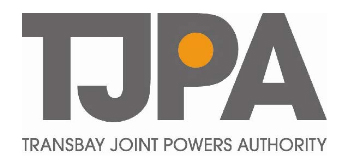The $2.2 billion dollar facility had been open for just six weeks when it was closed because of cracks found in two steel girders on Sept. 25, 2018 [See “Future home of CAHSR closed following discovery of cracked beam,” Trains News Wire, Sept. 26, 2018].
While officials with the Transbay Joint Powers Authority have not yet set an opening date, the Chronicle reports repairs to the cracked beams, and a matching but unbroken pair elsewhere in the structure, are expected to be completed in the first week of June. However, an independing review committee could determine that additional inspections or repairs are needed, which would extend the closure.
The three-block-long structure, which features a rooftop park that has also been closed, opened in August 2018. To repair the damaged girders, workers will bolt 2-inch-thick steal plates on both sides of the flanges of each girder, a process requiring some 224 bolts.















The building is about 4 stories tall and two blocks long. It extends well above ground and is hard to miss. (Regarding Grand Central, the concourse there is one story below ground itself, down ramps from the street.)
@Mr_Narita, I am not complaining about the tracks being underground, only the terminal building. Instead of a park above it, the building (i.e. headhouse) should be built above ground like Grand Central Terminal.
The Transbay Transit Center may be a tragedy waiting to happen regardless of retrofitting. The idea of a subterranean intercity railway terminal is preposterous! It makes more economic sense to build above ground where the terminal can be visible. And, prospective passengers need not depend solely on signs to find it.
In its current configuration, Transbay Transit Center is more like New York’s Penn Station rather than Grand Central Terminal. There will be no Farley Post Office building available for future expansion.
Proofreader’s day off? ” an independing review” and “2-inch-thick steal plates”? Is that an independent review or an impending review? And they are steel plates.
Just so everyone knows, a Trains Forum poster linked an article from ENR magazine that explained the the source of the cracking was not “incompetent” design as many accused by a small change in fabrication process by the steel fabricator; done presumably for their fabrication convenience. Unfortunately that minor change is what caused the crack. The design was sound, this small change lead to this huge problem. Hopefully this steel fabricator has up to date liability and errors and omissions insurance, because they would likely have to pay for the repairs (probably a couple of million dollars) and compensation to the JPA for loss of use.
Penelope, it’s in San Francisco, there’s practically no where above ground you could build it within striking distance of downtown, so subterranean makes complete sense…and it’s not like the citizens aren’t used to things underground, after all Muni Metro and BART both run underneath Market Street. As for future expansion, that would be highly unlikely to be needed, unless somehow S.F. manages to find thousands of acres of dry land to expand the city on, it’s stuck on the stub end of the peninsula…there’s almost no need for room to grow beyond what is already included in the existing plans(it’s built to handle way more capacity than is existing or is planned to exist in 20 years, so I think we’re good there).